Chris Parkin tests out the high-tech Howa 1500 Carbon 6.5 Creedmoor in MDT XRS Chassis in this detailed rifle review
Yet again, Howa have a new combination to show with their carbon-wrapped barrel chambered in 6.5 Creedmoor on the familiar 1500 action, now seated in an MDT XRS chassis. This is advertised as a ‘crossover rifle stock’, a hybrid design to bring chassis benefits to shooters wanting a more traditional feel.
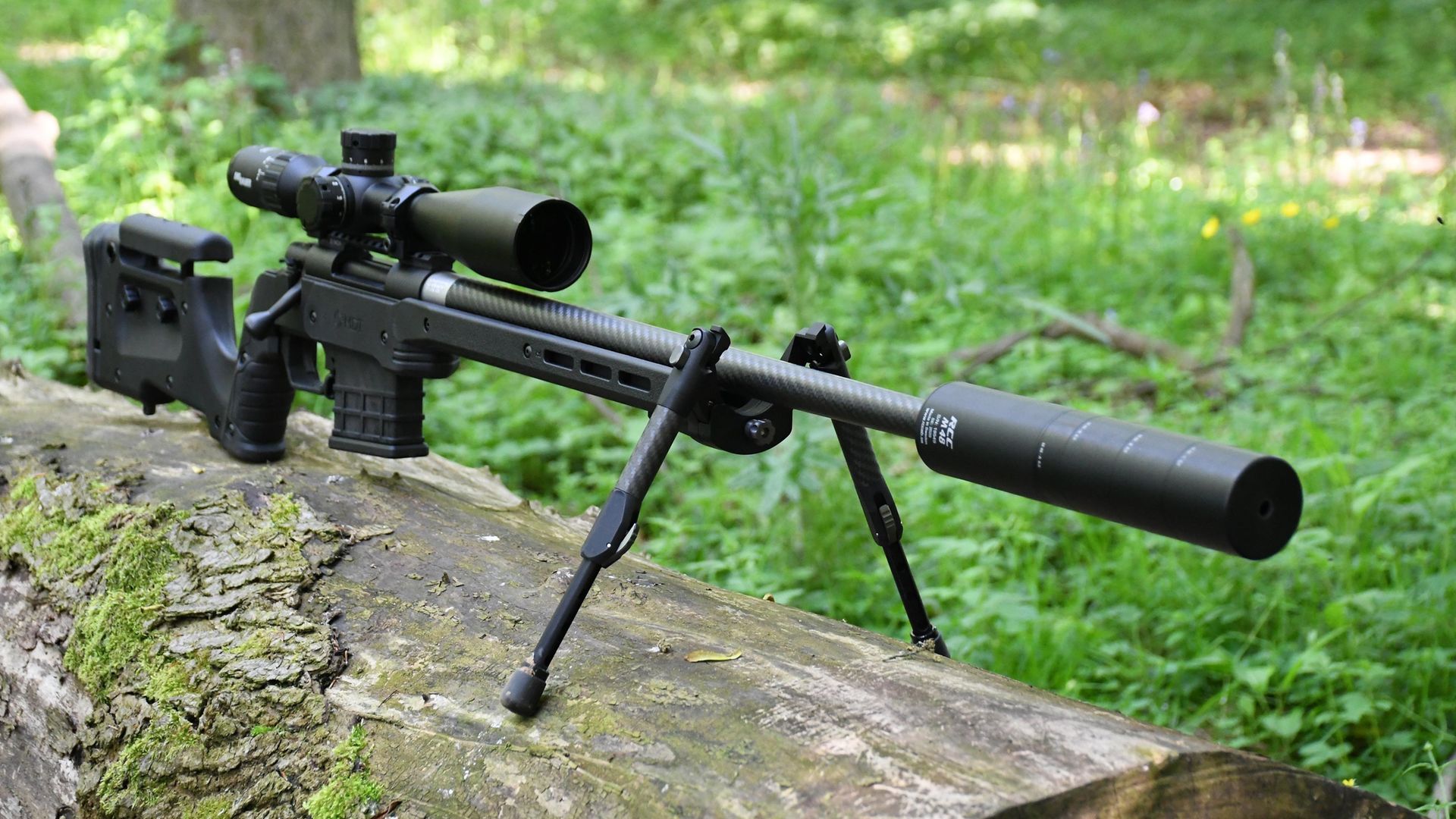 credit: Chris Parkin
credit: Chris Parkin
First impressions of the Howa 1500 Carbon
The great appeal of Howa is that you can build them as you like within a modular product range. The latest carbon-wrapped barrel here is 24"/610mm long and stainless steel internally, crowned and threaded 5/8x24 for a moderator. The 19mm muzzle diameter tapers out straight to 30mm without a characteristic radiused swell at the reinforce before it enters the 34mm action.
The carbon wraps the centre of the barrel with flanged stainless ends threaded. I used the borescope for a post-cleaning inspection which showed it to be extremely neatly rifled with a mirror-like finish to the steel and not a single imperfection visible anywhere, which in fairness, is quite unusual on a factory rifle barrel. Was it too good to be true?
Howa’s twin lug action is 200mm in overall length with two captive screws within the bedding, securing it into the stock fore and aft of the magazine well which here accepts AICS-compatible ten-round units: single column, centre feed.
The push-feed bolt with two locking lugs and claw extractor alongside a left side plunger ejector performed as expected throughout the review. Bolt stroke is 104mm with a 72mm long ejection port between the action’s bridges, each supporting one end of the long action (Remington 700 compatible). The Tier One Picatinny rail is secured with 4 Torx screws, rather strangely T10 plain steel in the front and T15 stainless at the rear. All action steel is finished with matt bluing with a teardrop 18mm knob on the 60mm bolt handle, which provides ample leverage for reliable operation without unnecessary length stuttering bolt stroke at speed.
A gas escape port is on the left side of the front action bridge in the event of a burst case and similar ventilation holes appear along the length of the 17.3mm bolt to aid pressure dispersion away from the shooter should a problem ever occur with ammunition.
The left-side bolt-release button sits to the side of the shroud with a visual cocked action indicator. Opposing this is the folded steel safety catch which acts upon the HACT trigger with forward for fire, middle safe with bolt operation, and rear safe with bolt locked for additional handling security.
Two stages are offered from the adjustable HACT trigger which broke crisply from factory settings at 1650gr/42oz – quite heavy perhaps but it can be lowered and has a reassuring feel as your finger pressure builds before the sharp break and subsequent well-sprung overtravel, which I rather liked.
Serrations run the length of the 6mm blade and there is plenty of space for gloved fingers within the guard. An ambidextrous release catch on the front for the mag allows it to drop free under its own weight loaded or empty. When re-inserted, it clicks positively and audibly into place.
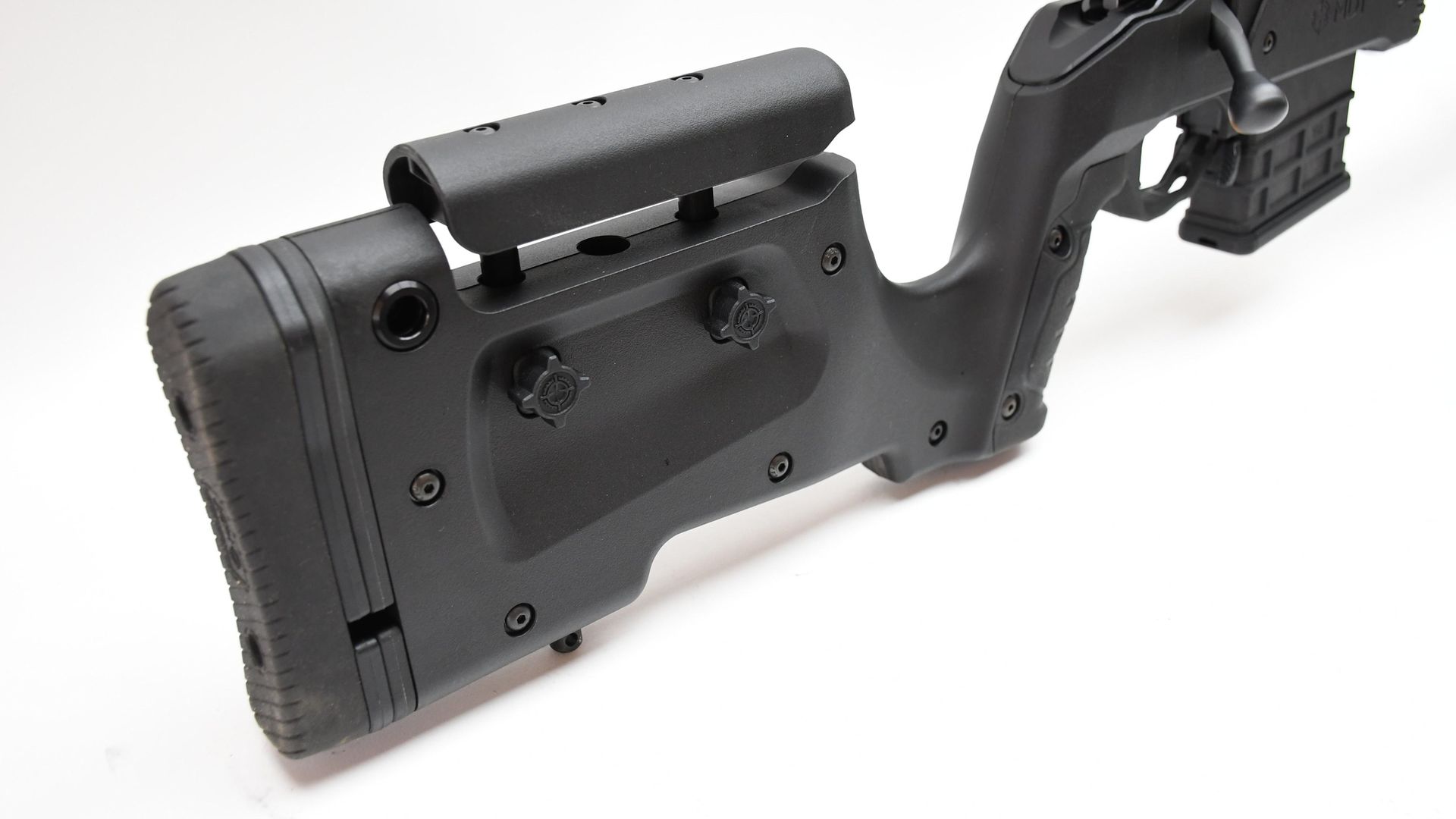 credit: Chris Parkin
credit: Chris Parkin
Howa 1500 Carbon stock style
MDT have been very busy with stock variants and the XRS is a bit more tactile and warmer to the touch with black polymer/composite skins over the 6061-aluminium skeleton – Flat Dark Earth is also an option, if you fancy something a little different.
From the front, the barrel is fully free-floating with M-Lok compatible accessory slots to which I fitted one of Tier One’s Evolution bipods. This effectively ‘carries’ the rifle, allowing centre of gravity to reside lower down. The bore is effectively the pivot axis, and I have to say it made the rifle noticeably more stable when aimed than with an equivalent height bipod with the pivot axis below the stock.
If you can fit one, there are benefits for larger rifles, although I’d suggest the long-legged version for a rifle like this with deep grip hung below the bore line to maintain good elevation for uphill or downhill targets. I had the shorter unit and although fine when horizontal it couldn’t cope with any inclined shots from a flat surface.
The pistol grip is a polymer unit with a rubber frontal area and rather nicely extends reach to trigger to 75mm from the throat, rather than the 65mm seen on most AR15 grip designs; this just feels better with more space to get the index finger pad in position, not the joint on the blade.
Its vertical profile also offers thumb-wrapped or upward positioning for really fast bolt operation whilst providing a secure grip on the rifle form varied positions. A spare is supplied, which can be interchanged giving true vertical front face on the grip.
The butt hook underneath offers acceptable space, and the bag rider is ideally suited to a rabbit ear bag with a longer bipod. The stock doesn’t resonate on firing and no recoil impulse or concussion is transmitted through the naturally dampening polymer skins from the underlying aluminium spine.
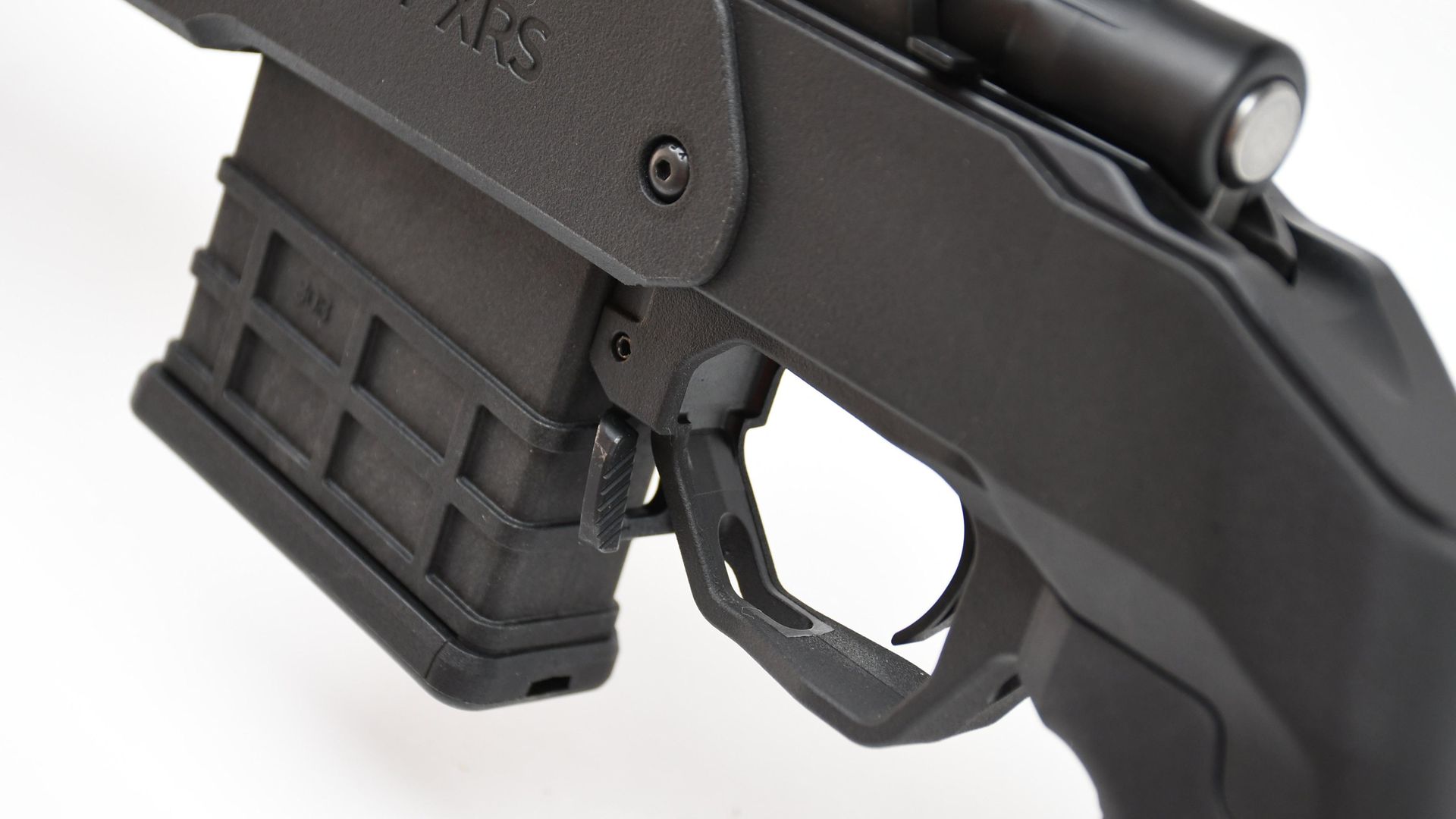 credit: Chris Parkin
credit: Chris Parkin
The Howa 1500 offers easy adjustment
Over 40mm of vertical extension is available on the cheekpiece, which has two polymer dials to release it and lock back in position. It will need to be all the way down or high up to extract the action’s bolt but that is no real hassle and to be expected these days.
It is 34mm wide with a radiused top, so fine for the cheekbone positioning without jaw displacement, as its overall height of just 23mm avoids jaw contact due to the free space below. It’s a shame there is no lateral adjustment, but compromises have to be made in terms of functionality as this isn’t a particularly expensive rifle.
Two spacers are fitted under the reoil pad bringing length of pull up to 13"/330mm, which is short, but you can add more if desired. Three interlocking extra spacers are supplied at 5mm each and they are quite easy to alter.
This still maxes out at 345mm though, which I think is still too short for many shooters in comparison to other guns. The rear pad is 20mm thick and has a soft texture with diagonal serrations for additional grip. All edges are radiused and it’s 40mm wide at the heel and 33mm at the toe, with 125mm overall height.
Overall, not too soggy, so generally a good feel when the bipod is loaded and reassuring when placed in the shoulder, even with the short length of pull and when shot prone.
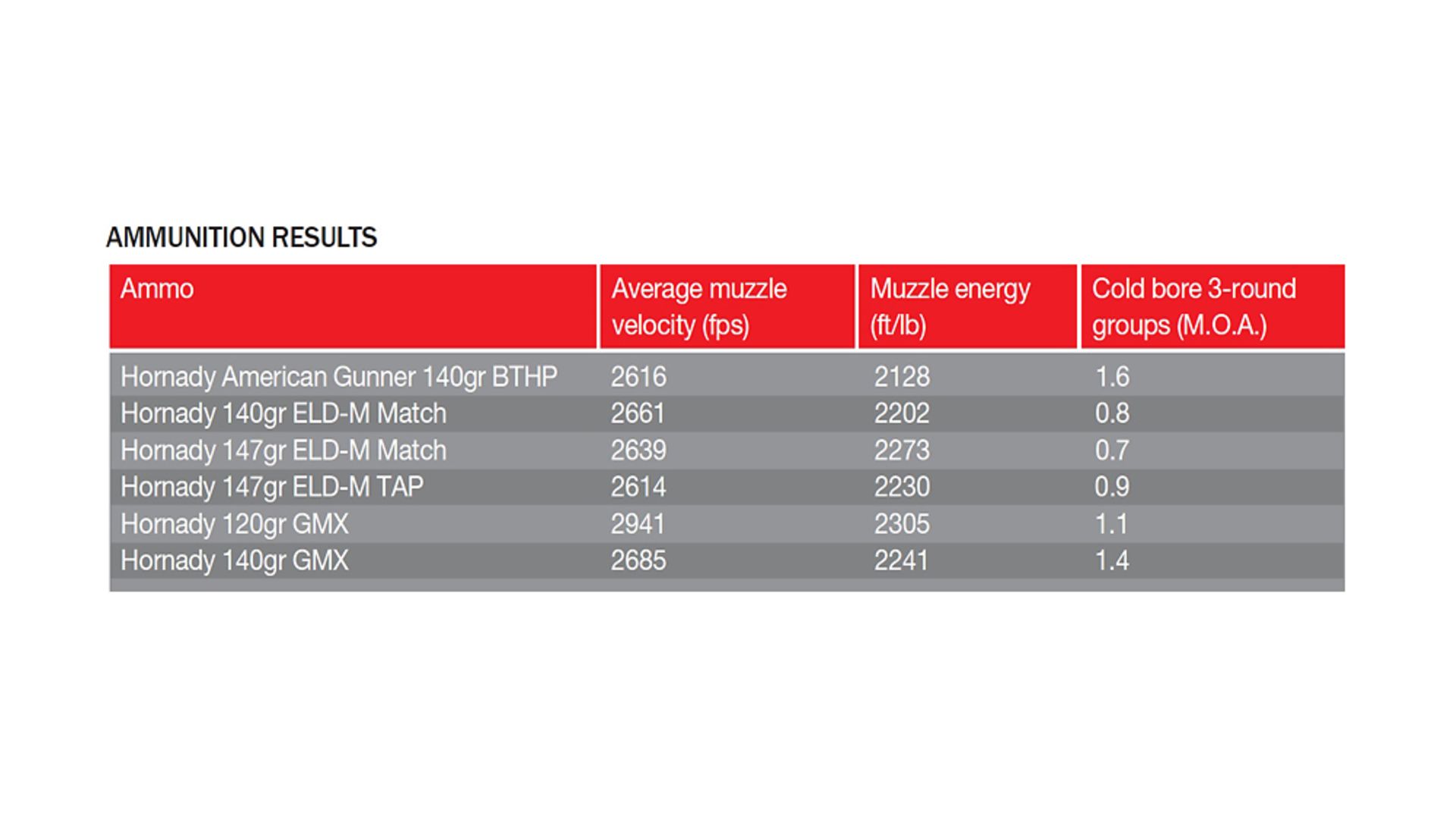 credit: Chris Parkin
credit: Chris Parkin
How does the Howa 1500 perform with different ammo?
Performance on paper is listed in the table above with the usual excellent relatively low recoil from the soft-shooting Creedmoor cartridge. The 24" barrel happily maintained acceptable velocities, making the most of this long-range cartridge.
My general feeling is carbon-wrapped barrels, like barrels of any manufacturing style, profile or rifling process, have limitations. For me it’s heat in this case and although primary cold barrel groups on paper at 100m were more than acceptable and within 1 MOA, longer strings showed the groups open. Thermal expansion between dissimilar materials with what is fundamentally insulation wrapping heated steel!
Although very stiff it nevertheless insulates against cooling the steel. This is why I limited myself to 3-round groups on a 22°C day with extended cooling time between strings of up to 30 minutes, away from the bench and into the shade on a sadly wind-free day.
A Tango 4 scope was supplied from SigSauer and these have impressed me before for an easy shooting approach with forgiving eye box and a complex, but not too ‘busy’ first focal plane reticle.
I go for groups shot on paper and don’t chase position once approximately zeroed, so it’s interesting to note how different loads shift on paper due to harmonic changes from bullet weight, shape and speed, regardless of inherent barrel stiffness.
When cold, the Howa’s carbon barrel retained all individual groups within a 75mm circle regardless of ammo type and weight (from 120gr copper, all the way through to 147gr jacketed match bullets), that is testament to the fundamental stiffness of wrapping a slim steel barrel with stiff, woven carbon fibre.
I liked the trigger, and this is an area where Howa have massively improved their range over the years, and I also like the bolt lock option, especially for a hunting rifle where it can’t be caught on foliage and sprung open dumping ammo on the ground.
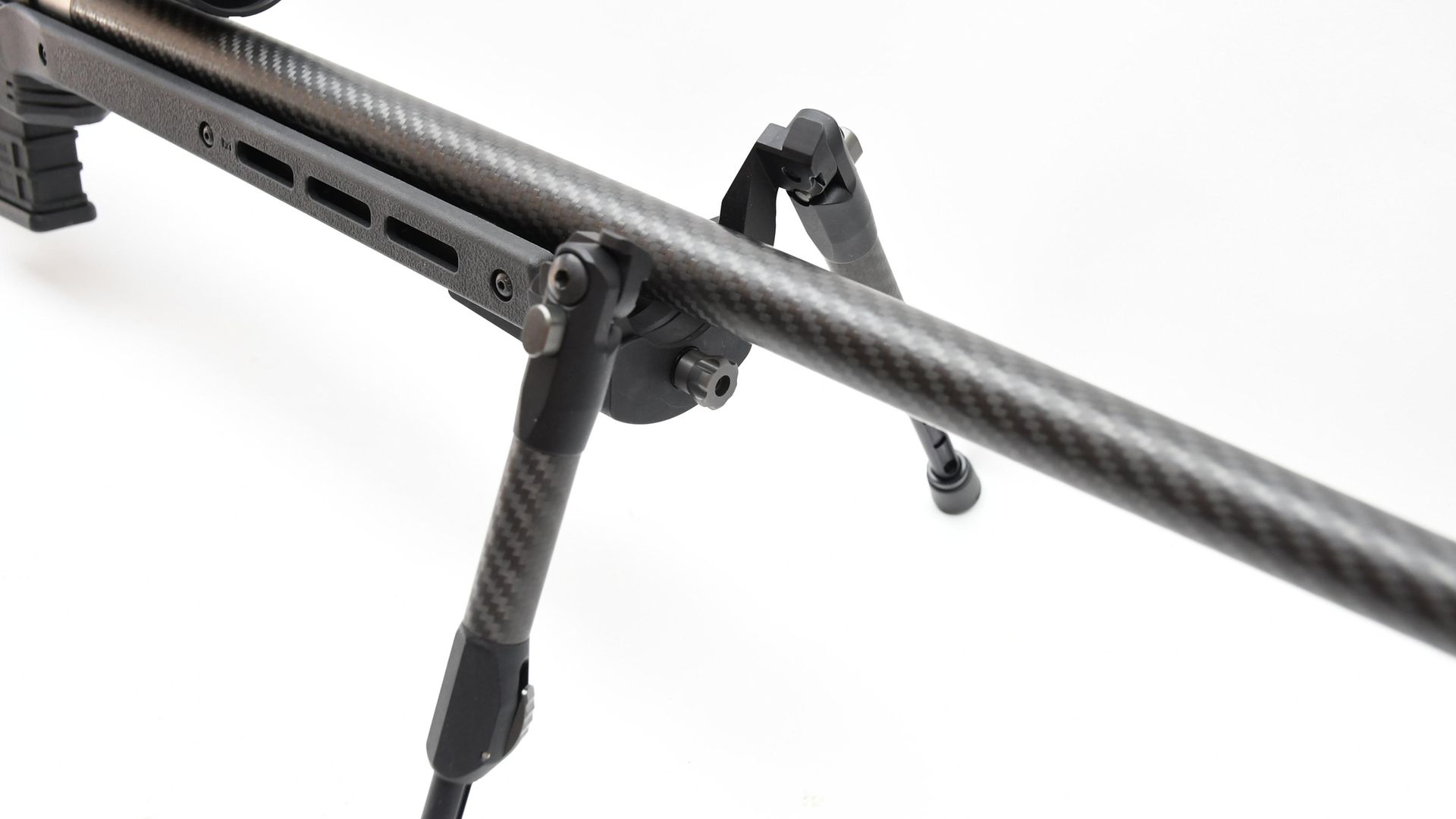 credit: Chris Parkin
credit: Chris Parkin
Fit and finish of the Howa 1500 Carbon
Action fit in the chassis was neat with little bedding stress from the steel aluminium interface. MDT have an interesting claim on their packaging that says: “The MDT XRS provides and instant and consistent increase in accuracy to your factory rifle action,” so they must be confident to make such a claim, which as always is open to interpretation.
The polymer composite side panels are well suited to winter use, certainly more so than bare aluminium, and are indeed quieter when tapped or bumped. The rifle feels like a lighter varminter; the weight is balanced more rearward due to the light barrel and the barricade stop is further ahead of the magazine well than many designs.
Shooting from quad sticks offered balanced support – but from a barricade, the gun felt a little less definite with the slight rearward weight bias opposing the current chassis trends. You can of course add weights to the M-Lok fore-end, but it would seem slightly contrary to the weight-saving benefits in the barrel on this Howa build.
RCC’s sound moderator was appreciably quiet on the rifle with its modular construction adding back a little nose heavy mass to the system, yet remaining compact with just 49mm diameter on its 220mm overall length.
Its reflex build returns 70mm over the barrel from the thread’s shoulder and given the other heat issues of the shooting trips, was itself good at dissipating its heat.
I was definitely a big fan of the bipod. Its stability is exceptional and I’m going to look at ways of mounting something similar to a couple of my own rifles that don’t have M-Lok options. Tier One do have Picatinny fit, and I can see the gunsmithing tools coming out of semi-retirement for some modifications to my McMillans.
As well as a natural tendency to self-correct for canting when first setting up, the bipod’s axis and the gun’s weight also self-dampened some of the firing torque on recoil, allowing for faster follow-up shots with improved recover time.
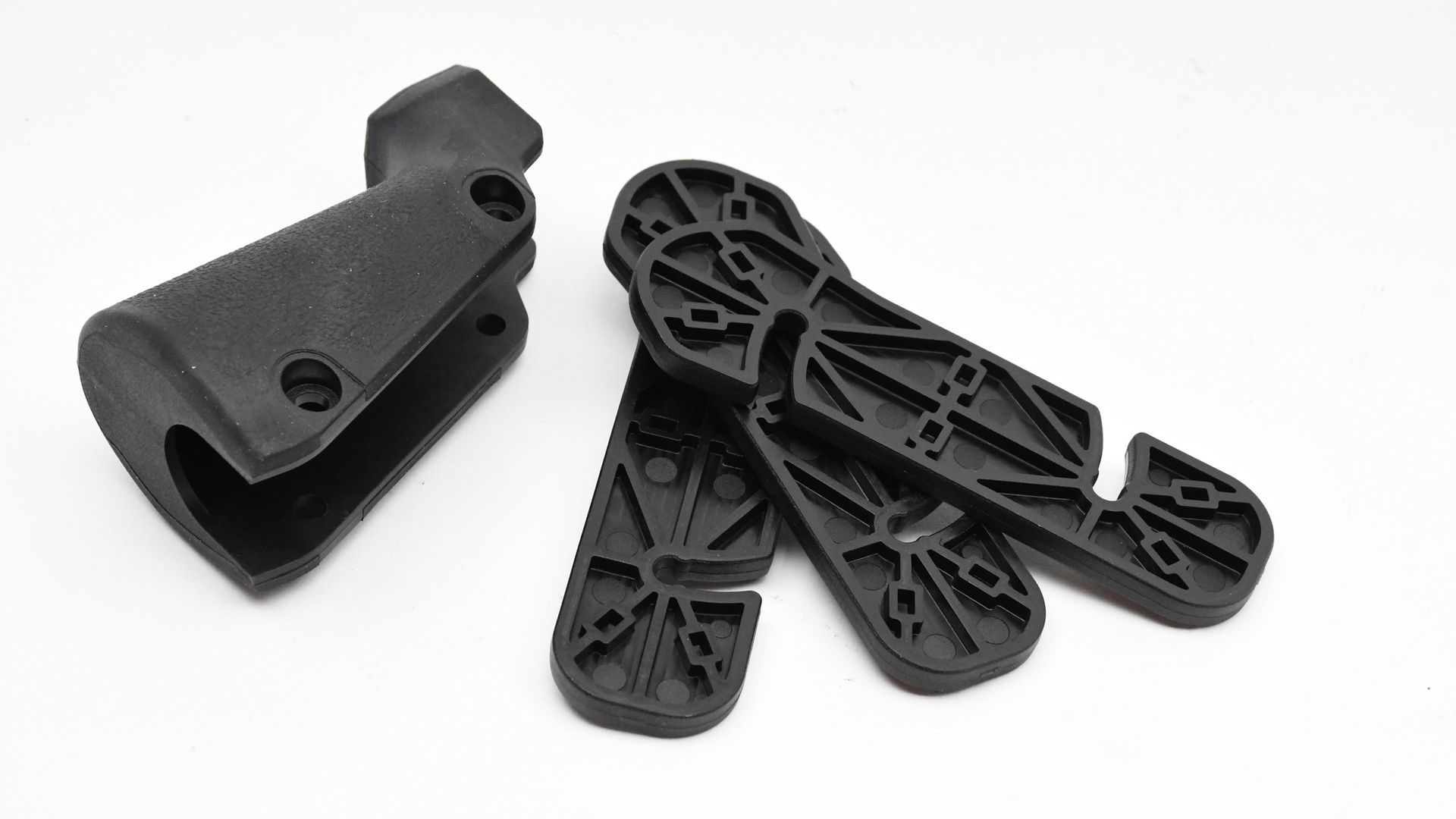 credit: Chris Parkin
credit: Chris Parkin
Every design is a compromise and there are no magic materials, certainly not at realistic cost, so it’s wise to be sensible with your expectations for a barrel and material. This rifle/barrel is fundamentally better suited to a relatively low rate of firing rifle; it’s not an extended range paper puncher.
I may be wrong, but until I’m proven otherwise, I’ll stick with my current approach which places carbon fibre as a material best suited to hunting rifles and low volume varminters that aren’t getting overly hot.
Of course, in the winter, the cooler air is a friend and the weight saving of carbon fibre is appreciable, especially on this lighter MDT stock, which seems more of a crossover between plain polymer and timber for use in a hunting scenario – once you’ve got used to a world of M-Lok accessories.
The bipod is perhaps a tad bulky for such a venture but that’s a moot point because you may well choose a more compact option from Tier One anyway, better suited to a short and lightweight hunting rifle.
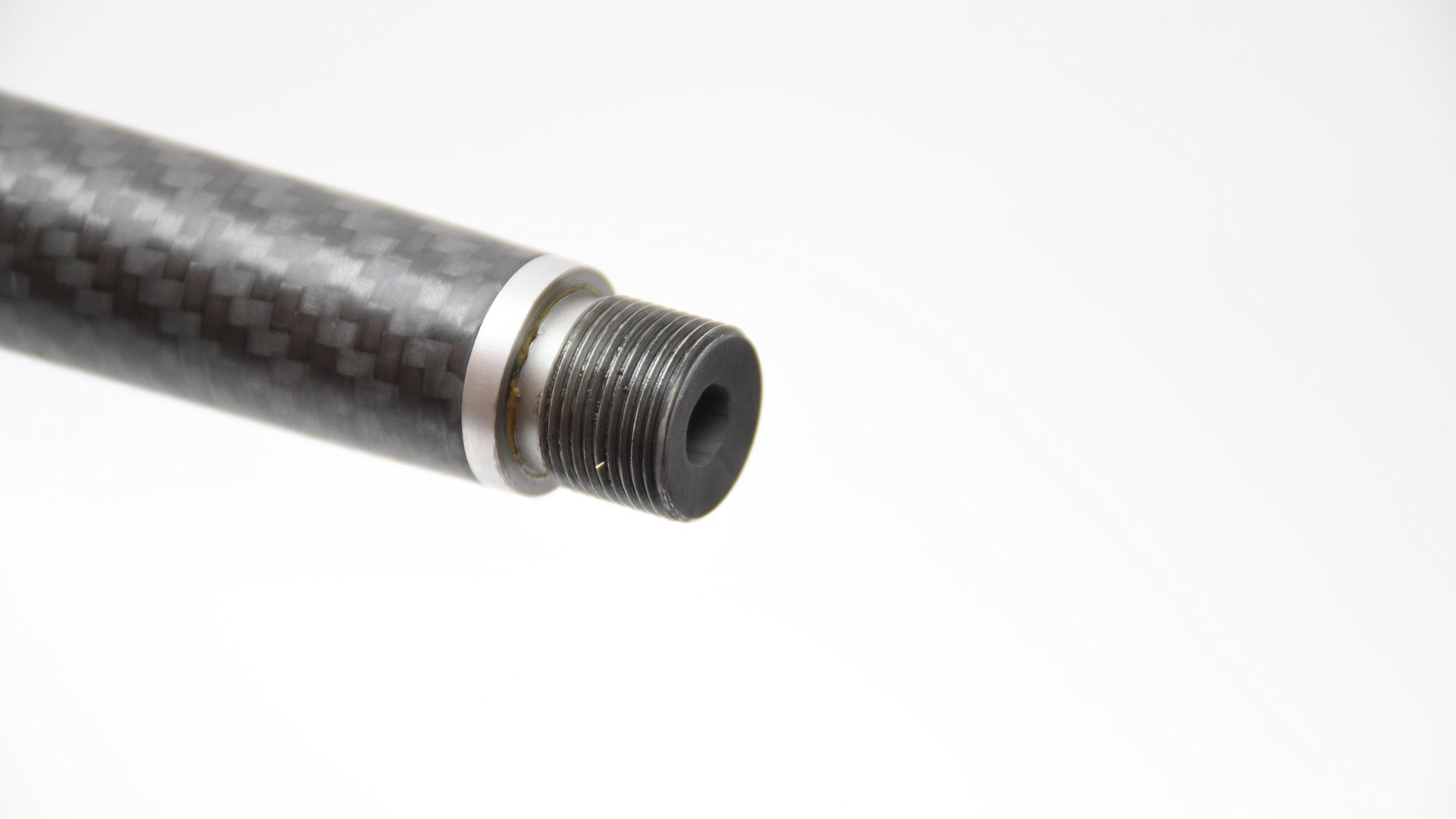 credit: Chris Parkin
credit: Chris Parkin
Overview
Pros
- Smart Looks
- Light weight
- Functionally reliable Howa action
- Good Trigger
Cons
- Suffered from barrel heating/point of impact shift
- Short length of pull, even with supplied spacers
Verdict
- The Howa is a good-looking rifle with excellent handling but the carbon barrel didn’t perform as well as its solid steel Howa peers, which I have found reliable for 10 round+ strings in the past.
The carbon barrel suffered after three shots from a cold bore so perhaps better suited to hunting rather than target use in my opinion. MDT seem to have come up with a good overall balance for a chassis but they do need to address the length of pull issue by supplying more spacers.
Specifications
Barrel: Carbon wrapped stainless barrel, barrel, 19mm muzzle
Barrel length: 610mm/24”
Overall length: 1110mm/44”
Weight: 3.9kg/8.6lbs
Muzzle thread: 5/8”x24
Stock: MDT XRS aluminium/polymer chassis
Length of pull: 330mm/13”
Trigger: 2 stage HACT breaking at 1650gr/52 oz.
Safety: 3 stage with bolt lock
Magazine: AICS compatible 10 round detachable
Suggested Retail Prices:
Howa 1500 Carbon 6.5 Creedmoor in MDT XRS Chassis –£1,779.99
RCC M48 Mod –£249.99
SIG Optic - Tango4 6-24 – £849.99
Tier One Med Rings – £136.99
Tier One Evolution Bipod -<£289.50 (fitting dependant)
Contact
Highland Outdoors
Tel: 01858 880 491
Ammunition used
Hornady
Edgar Brothers
Tel: 01625 613177